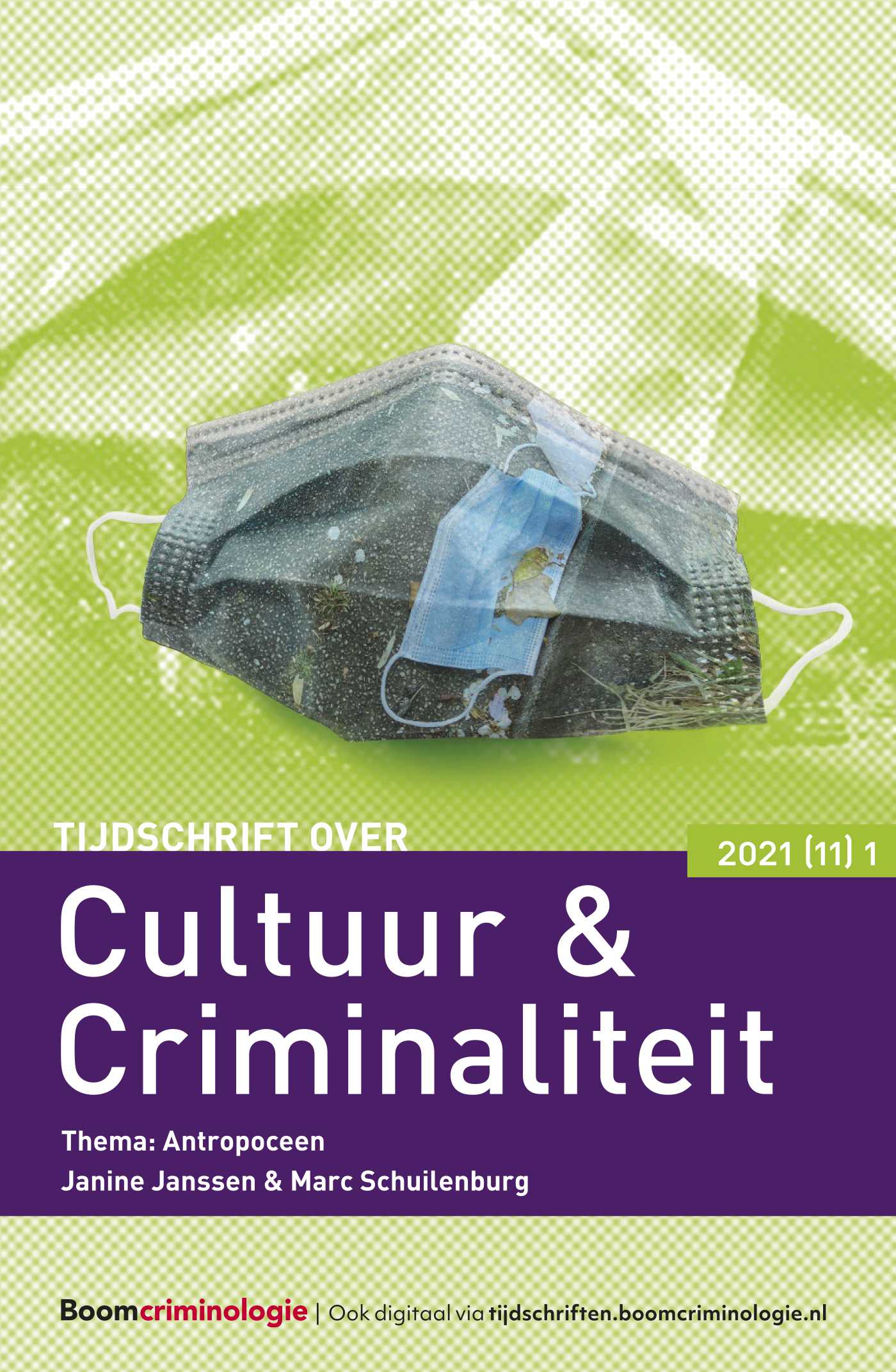|
Biographies of ‘criminals’ are an immensely popular genre. As ‘true crime’ stories they are generally found on the shelves of fiction literature. In this article the authors examine their cultural criminological significance. First, they examine what makes a ‘good’ biography, analyse how biographical material is used in the work of people like Robert Park and his Chicago School, Michel Foucault and Pierre Bourdieu and indeed historians. Then the authors list different traditions of criminal biographies. They conclude by arguing that ‘good biographies’, i.e. biographies that are both sufficiently emic and offer enough context information, have a lot to offer, because they show ‘the other side’ of criminology, provide information that cannot be obtained through strictly scientific methods and counter the reductionist images prevailing in the discipline. |


Tijdschrift over Cultuur & Criminaliteit
Over dit tijdschriftMeld u zich hier aan voor de attendering op dit tijdschrift zodat u direct een mail ontvangt als er een nieuw digitaal nummer is verschenen en u de artikelen online kunt lezen.
| Redactioneel |
BoevenbiografieënEen inleiding op dit themanummer |
| Trefwoorden | biography, convict criminology, narrative method, disqualified knowledge |
| Auteurs | Frank van Gemert en René van Swaaningen |
| SamenvattingAuteursinformatie |
| Artikel |
De poseBoevenbiografie tussen structuur en interactie |
| Trefwoorden | biography, structure, symbolic interactionism, presentation of self |
| Auteurs | Frank van Gemert |
| SamenvattingAuteursinformatie |
|
In biographies a structure perspective is common to place the key person in a context of time and place. Apart from opportunities and obstacles, also cultural frames for interpretation vary with context. In this article a second, interaction perspective is added. This can best be applied if the key person cooperates in the research and if an emic approach is used. A recent life history of Jan Hoolwerf demonstrates how the key person comes to various presentations of self that can be understood as poses that fit specific settings. |
| Artikel |
Met biografieën een beter begrip van witteboordencriminaliteit? |
| Trefwoorden | white-collar crime, corporate crime, biographies, case studies |
| Auteurs | Wim Huisman |
| SamenvattingAuteursinformatie |
|
The central question of this article is whether biographies can be a source for criminological research on white-collar crime and how they can contribute to the explanation of white-collar crime. To answer this question, 35 Dutch biographies were studied. Following the legal ambiguities of white-collar crime, not all of these biographies are about criminal offences. And following the dominant anthropomorphic approach to corporate crime, some of these are corporate biographies. Many biographies confirm current criminological explanations of the causation of white-collar crime. Yet, biographies also offer additional insights, for instance about the causal relevance of the private life of white-collar offenders. |
| Artikel |
Verpest in het nestEen casestudie van een criminele familie |
| Trefwoorden | family ties, fission and fusion, stigmatization, criminal family |
| Auteurs | Borris van der Swaan |
| SamenvattingAuteursinformatie |
|
This article analyses a criminal family. It is not the individual, but the family as a social entity that is central to this approach. The Van D.’s are a family of eleven brothers with a collective history of crime. Raised with anti-authoritarian norms, violence, alcohol and a strong sense of loyalty, they were known as an ‘army of brothers’ dominating the streets of H-town. The criminal family as object of study proves valuable in understanding the influence of contextual factors, subculture, and stigmatization. In the case of the Van D.’s, blood ties create cohesion and conflict at the same time. |
| Artikel |
Een dubbelleven |
| Trefwoorden | autobiography, desistance, narcotic substances, working incognito |
| Auteurs | Rein Gerritsen |
| SamenvattingAuteursinformatie |
|
In his first book Knock-out from 2009, Rein Gerritsen tells his story of how easy it is to end up on the wrong path. Conversely, in the second part of his autobiography, 13 accidents, he explains how hard it is as an ex-convict to stay on the right track. This goes to show that there is much truth in what they say: ‘The real punishment only starts after you’re out.’ This article is an excerpted pre-publication from 13 accidents. |
| Boekbespreking |
Van bevlogen radicaal tot vervlogen ideaal |
| Auteurs | Fiore Geelhoed |
| Auteursinformatie |
| Artikel |
|
| Trefwoorden | journalist, serial killers, interview, biography |
| Auteurs | Joke Harte |
| SamenvattingAuteursinformatie |
|
Most biographies on criminals have been written by journalists. Dutch writer and former journalist Sytze van der Zee wrote portraits of two serial killers. In order to reconstruct the criminal facts and the police investigations in both cases, he collected data by gathering as much documents as possible, and by interviewing the main characters. For the second biography, he had many conversations with the serial killer. In this interview, Sytze van der Zee tells about his motivation to write these books, the research methods he used, the reliability of the collected information, and his experiences while researching. |
| Diversen |
Nieuwe Revu presenteert |

